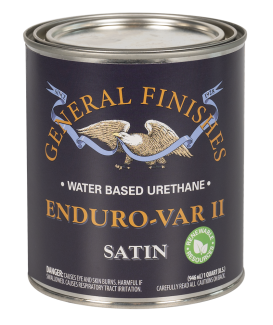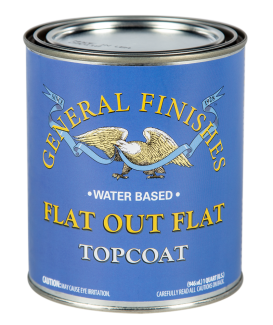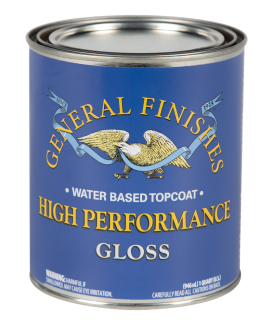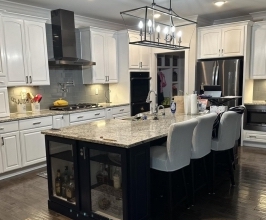ROUGH, DRY SURFACE
This is called dry spray. You may have sprayed too lightly.
Re-sand the finish with 320-grit sandpaper and apply a heavier coat. Keep your gun at 6-8" from the surface.
DIMPLES IN THE FINISH
This is called orange peel, caused by spraying in temperatures that are too cool. Cooler temperatures will adversely affect how the finish will level and harden.
Water-based finishes must be applied at temperatures above 65 F. If it is cold enough to wear a sweater it is too cold to apply a water-based finish.
The surface of the wood must also be warm. If you turn the heat on when you enter your shop in the morning, the air heats up quickly but your furniture will still be cold for some time. Check the surface to see if it is warm.
Also, check the temperature of the finish. Warming cold finish by setting the can next to a heater or setting the container in some hot water for 5 minutes will improve the ease of application.
NOTE: Larger dimples are called "fish-eyes" or "craters". Cool temperatures can cause these, but the more likely source is contamination of the finish with either wax or silicone.
BLUSH
Blush, the term for a cloudy, milky appearance in the finish, has two causes
1. The most common reason is an incompatible stain. For example, using a water-based topcoat over a heavy oil-based stain. When the top coat is applied, the oil in the stain seeps up through the finish and reacts with the acrylic causing a chemical blush.
To prevent this,
- Increase dry times when changing from an oil-based finish to a water based finish.
- Allow an oil-based finish to dry 72 hours before a water-based finish.
- Allow a water-based finish to dry 24 hours over an oil-based finish.
- Use a quick-drying water-based stain. If you choose to use oil based stain, seal the stain with a coat of shellac or lacquer sealer. This will provide a barrier between the oil and the acrylic. Proper drying time between the oil stain and finish coats is essential! The other cause for blushing is high humidity.
- Spraying water-based finishes in humidities of over 75% may cause blushing because moisture becomes trapped beneath the finish and cannot evaporate.
You can prevent this condition by increasing air movement in the finishing area with a fan. All water needs to evaporate is sufficient air movement. You can also improve drying conditions by increasing the temperature in the drying area.
2. The surface is not leveling out. In hot temperatures (85°F - 100°F) the finish may dry too fast.
Use General Finishes Extender to open (increase) the dry time. Finishes that dry too fast may not completely level out before all the water evaporates from the finish.

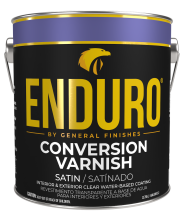 Enduro Water-Based Conversion Varnish
Enduro Water-Based Conversion Varnish
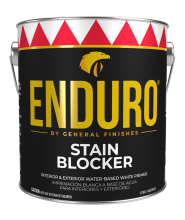 Enduro Water Based Stain Blocker Primer
Enduro Water Based Stain Blocker Primer
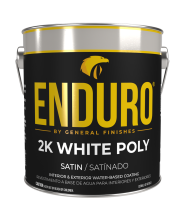 Enduro Water-Based Tintable 2K White Poly
Enduro Water-Based Tintable 2K White Poly
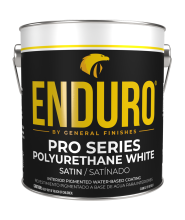 Enduro Water-Based Pro Series White Polyurethane
Enduro Water-Based Pro Series White Polyurethane
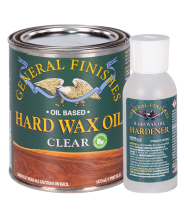 Hard Wax Oil & Hardener
Hard Wax Oil & Hardener
 Gel Stains
Gel Stains
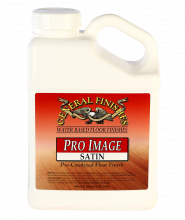 Pro Image Flooring Topcoat
Pro Image Flooring Topcoat
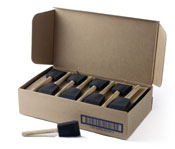 Jen Poly Brushes
Jen Poly Brushes
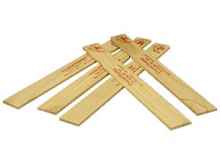 Stir Stix
Stir Stix
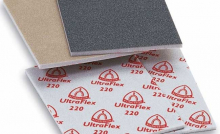 Ultraflex Softback Sanding Sponge
Ultraflex Softback Sanding Sponge


